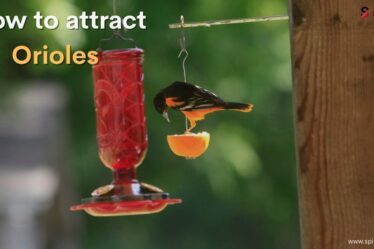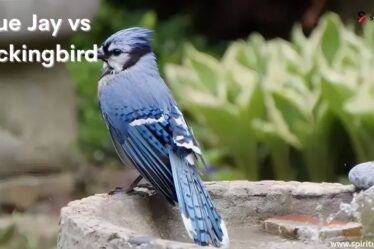
Arkansas is home to a surprising variety of shorebirds. From wide-open mudflats and hidden wetlands to quiet riverbanks and lake shores, the state draws in hundreds of avian visitors every year. These birds, often called waders, have long legs, sharp eyes, and a deep connection to watery places. Whether you’re scanning the shore with binoculars or simply walking near a marsh, you’re likely to see one of these stunning species foraging or nesting. Shorebirds are especially active during spring and fall migration, making Arkansas a prime stopover on their long journeys between breeding and wintering grounds.
Understanding shorebird identification can feel tricky at first. Their plumage is often brown, gray, or streaked to help with camouflage, and many look similar. But look closer—differences in their bill shape, legs, and wingspan help tell them apart. Plus, their behavior—how they move, feed, and call—can reveal a lot. These birds are not just pretty to watch. They’re essential to the local ecology, feeding on insects, snails, marine worms, and even small clams or mussels. Birdwatchers, nature lovers, and scientists all rely on this checklist of shorebirds in Arkansas for spotting, studying, and conserving them.
Types Of Shorebirds In Arkansas
Birders across the state have documented a wide variety of shorebirds—from the dainty Least Sandpiper to the stately American Avocet. This group includes more than just one kind of bird. It covers sandpipers, plovers, rails, phalaropes, and more. These species don’t just vary in size and color. They also have unique calls, feeding styles, and habitats. Some prefer damp fields, others nest along sandy beaches, and a few hide in muddy swamps where few people tread. The diversity is astonishing.
During migration seasons, especially in April and September, Arkansas turns into a busy rest stop. Birds fly in from the arctic tundra or the Gulf Coast, using places like Bald Knob National Wildlife Refuge and Lake Conway as safe zones. These birds need clean wetlands, shallow water, and quiet places to rest and eat. But as human development spreads, some of their habitats are disappearing. That’s why knowing these species matters—it helps with conservation efforts. When people recognize the beauty and role of shorebirds, they’re more likely to protect the places these birds need to survive.
List of 27 Types Of Shorebirds In Arkansas
1. Semipalmated Plover

The Semipalmated Plover (Charadrius semipalmatus) is a small shorebird with a clear black neckband and orange legs. Found along mudflats and sandy beaches, this species stops in Arkansas during migration. It uses short runs and sudden pauses while feeding on insects, worms, and small snails.
2. Killdeer
The Killdeer (Charadrius vociferus) is common in open pastures, fields, and even urban environments. This noisy bird is known for pretending to be injured to distract predators from its nest. Its high-pitched call, “kill-deer,” is easy to recognize.
3. Greater Yellowlegs
The Greater Yellowlegs (Tringa melanoleuca) stands tall with its long, bright yellow legs. Often found in freshwater marshes, it feeds by walking through shallow water, jabbing at fish and insects. It’s larger and more vocal than its cousin, the Lesser Yellowlegs.
4. Lesser Yellowlegs
Smaller and slimmer, the Lesser Yellowlegs (Tringa flavipes) is often seen in groups. It searches for food like flies, beetles, and tiny crustaceans along the edges of wetlands.
5. Spotted Sandpiper
The Spotted Sandpiper (Actitis macularius) has a unique bobbing motion as it walks. During the breeding season, it develops bold spots across its belly. This bird loves riverbanks and rocky shores.
6. Ruddy Turnstone
The Ruddy Turnstone (Arenaria interpres) uses its short, strong bill to flip over shells, rocks, and seaweed looking for food. Its bold black-and-white pattern makes it stand out on coastal flats.
7. Dunlin
The Dunlin (Calidris alpina) migrates through Arkansas in flocks. It has a black belly patch in spring and a long, drooping bill. You’ll find them feeding in mudflats and wet grasslands.
8. Least Sandpiper
The Least Sandpiper (Calidris minutilla) is the smallest shorebird in North America. This bird prefers muddy edges and feeds on insects, spiders, and tiny worms.
9. Sanderling
The Sanderling (Calidris alba) dashes back and forth with ocean waves, feeding on small prey left behind. In Arkansas, it appears mostly during migration, favoring sandy shores.
10. Wilson’s Snipe

The Wilson’s Snipe (Gallinago delicata) is secretive and well-camouflaged in damp fields. With a long, straight bill, it probes for earthworms and insects in the mud.
11. American Woodcock
The American Woodcock (Scolopax minor) is a chunky bird found in moist forests and meadows. Known for its evening “sky dance,” it spirals high and chirps in flight.
12. Wilson’s Phalarope
The Wilson’s Phalarope (Phalaropus tricolor) spins in circles while swimming to stir up food from below. Females are more colorful than males—a rare trait in birds.
13. Pectoral Sandpiper
The Pectoral Sandpiper (Calidris melanotos) features a sharp border between its streaked breast and white belly. It loves grassy marshes during migration.
14. Solitary Sandpiper
As its name suggests, the Solitary Sandpiper (Tringa solitaria) is often alone. It bobs its head as it forages in wetlands and flooded woods.
15. Black-necked Stilt
The Black-necked Stilt (Himantopus mexicanus) looks like it’s walking on stilts thanks to its long, pink legs. It’s found in shallow ponds and marshes with clear water.
16. Semipalmated Sandpiper
The Semipalmated Sandpiper (Calidris pusilla) travels in massive flocks. It forages quickly along mudflats, grabbing small insects and plant seeds.
17. Long-billed Dowitcher
The Long-billed Dowitcher (Limnodromus scolopaceus) uses a rapid “sewing machine” motion to probe for food. Found in shallow water, its bill is much longer than its head.
18. American Avocet
With a long, upturned bill and striking black-and-white wings, the American Avocet (Recurvirostra americana) is elegant. It feeds by sweeping its bill side-to-side in the water.
19. Sora
The Sora (Porzana carolina) is a shy, chunky bird often hidden in dense vegetation. It gives a distinctive descending “whinny” call at dusk and dawn.
20. Western Sandpiper
The Western Sandpiper (Calidris mauri) is small and fast. With a slightly downcurved bill, it scours mudflats for moss, algae, and small crustaceans.
21. Short-billed Dowitcher
The Short-billed Dowitcher (Limnodromus griseus) resembles the long-billed type but prefers coastal and inland lakes. It’s often seen during migration.
22. Willet
The Willet (Tringa semipalmata) appears plain until it flies. Its broad black-and-white wing stripe flashes brightly in flight. This bird often nests near beaches and muddy flats.
23. Virginia Rail
The Virginia Rail (Rallus limicola) is hard to see but easy to hear. It lives in marshes, eating beetles, small frogs, and aquatic plants.
24. Black-bellied Plover
The Black-bellied Plover (Pluvialis squatarola) switches its gray winter plumage for a jet-black belly in spring. It’s the largest plover in North America.
25. Red-necked Phalarope

The Red-necked Phalarope (Phalaropus lobatus) is known for spinning on water like a toy. It nests in the arctic tundra but passes through Arkansas during migration.
26. Marbled Godwit
Large and cinnamon-colored, the Marbled Godwit (Limosa fedoa) uses its slightly upturned bill to probe mud for crustaceans and mollusks.
27. King Rail
The King Rail (Rallus elegans) is the largest rail in North America. It’s found in brackish and freshwater marshes, hiding in thick grass and reeds.
Conclusion
Shorebirds in Arkansas are a special part of the state’s wildlife. These birds visit marshes, mudflats, and lakes all year long. Some stay for breeding, while others stop during migration. People who love nature enjoy watching shorebirds in Arkansas. Each bird has its own color, size, and behavior. From the Killdeer to the American Avocet, they all bring beauty to the wetlands.
If you want to explore shorebirds in Arkansas, grab a guidebook and visit local lakes or refuges. You’ll see amazing species that rely on these places to live and feed. Protecting habitats means saving shorebirds in Arkansas for future generations to enjoy and study.



